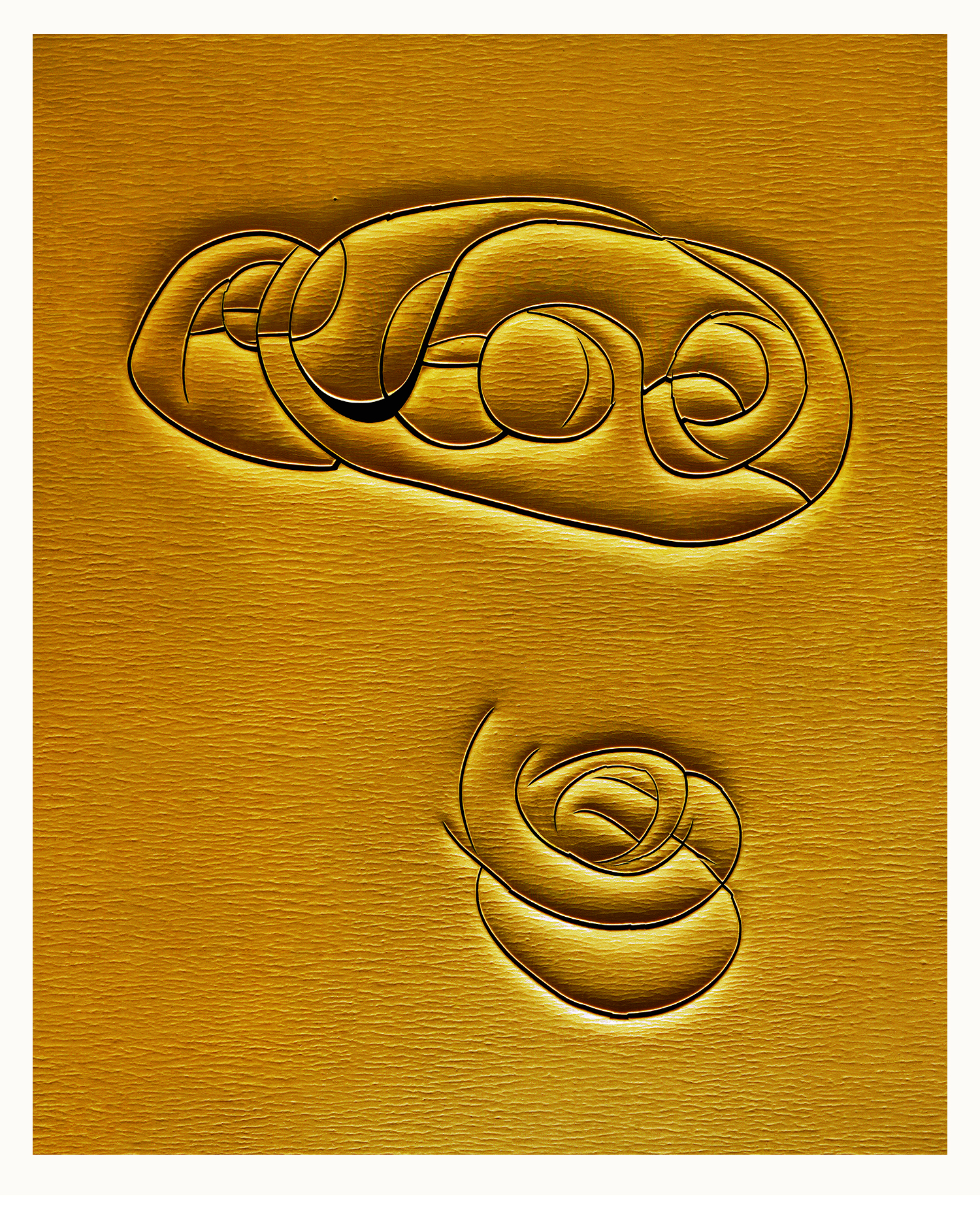RIP
RIP was conceived during Benjamin Collard’s former years of experimenting with digital works. Long before taking his first studio (Charterhouse street, Farringdon), Collard had already spent more than 5 years exhausting his interests in a multitude of different career forging endeavours. Amidst these many failed attempts to find either lasting employment or meaningful life pursuit, lost in the seemingly endless squalor of a life without purpose or direction, Collard sat waiting for a portion of chips in a dirty beaten up Chinese takeaway. Upon the old stool on which he sat, Collard noticed that a pattern had formed within the rips of the seat covering. The shape and form of the rips and tears in this dilapidated old seat cover would inspire the motivation he needed to begin his first conceptual artistic exploration.
Gripped by the simple pleasure he derived from the symmetry and composition of the textures, rips and cracks in the seat upon which he sat, Collard’s appreciation of this object stretched beyond the obvious pleasures to be found within beauty borne of decay, the imaginings of a different value determined by a different context, or the thrill of being first witness. In this object, Collard saw a profound reflection of his own place in the world. He looked down upon the collection of shapes as if looking at a self-portrait. The cracks and rips in this battered old seat sketched an outline that embodied the lively departure he had long before taken from the loving embrace of all those who loved and cared for him most. Even though this naive and spirited journey into the unknown had led him unto the squalor and deprivation of the life he was living and the very seat upon which he sat, he was certain that the nature of this venturing into the unknown, this departure from familiarity, comfort and safety was a fundamental part of human growth for which all of humanity would be capable of empathy.
So fervent was the effect of the shapes and textures in that battered old seat that Collard began to consider the results of applying the very latest technology, the most revered and lasting inks, printing and photographic specialists and equipment to what he saw. He would replace the foul obscurity of pallid deprivation and decay that surrounded the fundamentals of this concept with an abundance of colour, with a clarity and sharpness, with the loud, crisp, confident glow of something that would best emanate the grandeur of what he considered to be a moment of truth.
More than Collard's firm belief that, in the moment of seeing the rips in that seat, he had struck artistic gold by perceiving a universal truth of human experience. More than his intention to share and explore this concept through his work. Collard also saw an opportunity to experiment with the outcome of asking the following questions – Can we determine the value of our life by selecting, preserving, celebrating and sharing the moments of truth and beauty from within the meaningless, forgotten transient squalor of human existence? To what extent do we decide and create the very meaning and value of our own existence?

